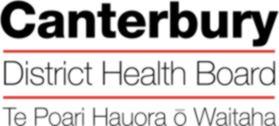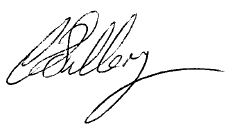
 CORPORATE OFFICE
Level 1
32 Oxford Terrace
Telephone: 0064 3 364 4160
Christchurch Central
Fax: 0064 3 364 4165
CHRISTCHURCH 8011
[email address]
CORPORATE OFFICE
Level 1
32 Oxford Terrace
Telephone: 0064 3 364 4160
Christchurch Central
Fax: 0064 3 364 4165
CHRISTCHURCH 8011
[email address]
17 June 2020
Nigel Gray
Email
: [FYI request #12827 email];
Dear Mr Gray
RE Official information request CDHB 10316
We refer to your email dated 11 May 2020 to the Ministry of Health which they have subsequently partially
transferred to us on 21 May 2020 requesting the following information from Canterbury DHB under the
Official Information Act. Specifically question 1 below.
1. Given that Electroconvulsive Treatment has been used as a method of torture historically in New Zealand,
can you please inform me of the precise number of these devices in NZ hospitals in present time?
Electroconvulsive Treatment is used by Canterbury DHB solely as a therapeutic treatment for people with severe
mental health conditions and only under strict conditions. Please find attached as
Appendix 1 information
provided by the Canterbury DHB for consumers and family-whanāu.
Within the Canterbury DHB there are four machines. Two are in Specialist Mental Health Services and two in the
Older Persons Health Service.
One machine on each site is the primary machine. The other is only used as a backup machine if there are issues
with the primary machine.
I trust that this satisfies your interest in this matter.
Please note that this response, or an edited version of this response, may be published on the
Canterbury DHB website after your receipt of this response.
Yours sincerely
Carolyn Gullery
Executive Director
Planning, Funding & Decision Support

Electroconvulsive Therapy (ECT)
Information for consumers and family-whānau
e
What is Electroconvulsive Therapy (ECT)?
lsiv
)
ECT is a procedure used to treat certain severe mental health conditions. ECT is usually
T
vu
considered only when other treatments, such as antidepressant medication or talking
ACT
n
therapies, have not been effective. It is most often used to treat severe depression, but can
co
y (EC
be used to treat other mental health conditions such as bipolar disorder or schizophrenia.
ro
ap
How does ECT work?
er
h
Elect
T
ECT stimulates the brain electrically to induce a seizure. Scientists are unsure how it works
but ECT appears to produce many changes in the chemistry and functioning of the brain.
ECT has been known to work more quickly than other treatments. With the usual course of
ECT it may take 6–12 treatments for a person to feel better, although some people may
require more treatments to achieve maximum improvement.
INFORMATION
The ECT procedure
ECT is carried out by doctors assisted by registered nurses. It takes place (usually on
Tuesday and Friday) in a specially designated procedure room. Before your treatment starts,
we will check your physical health. This wil include an electrocardiograph (ECG), a blood
test, memory test and maybe a chest x-ray.
OFFICIAL
During the treatment you will be asked to lie on a bed.
The doctor wil clean the areas of your head used in the procedure and apply small
THE
adhesive pads to deliver and monitor the treatment.
A needle wil be inserted into a vein in the back of your hand, and an anaesthetic
medication wil be administered to put you to sleep for about ten minutes.
Oxygen will be given through a face mask before and after the anaesthetic.
UNDER
A muscle-relaxing medication will be administered while you are asleep. When your
muscles are relaxed, an electrical stimulus is briefly applied to your head to stimulate a
brief artificial seizure.
When the seizure is over, you wil be taken to the recovery area where trained staff will
take care of you until you are awake. This takes about 20 minutes. You wil then be
taken to the waiting area where the nurse wil make sure you are comfortable and offer
RELEASED
you something to eat and drink.
Support during ECT
Family-whānau and support people may accompany you to the ECT suite however we ask
that children are not brought in. One person may remain with you until you are asleep and
can then wait in the waiting room until you are awake again. In exceptional circumstances
this person may remain during treatment and/or recovery by agreement of the medical and
nursing teams.
Ref: 236108
Authorised by: Chief of Psychiatry, SMHS
Page 1
10 July 2017
After the procedure
After treatment you must have a responsible adult with you for 24 hours, until the anaesthetic has completely
worn off.
You and your family-whānau wil be given a brochure titled “Discharge after a general anaesthetic” which has
information to help you with your recovery.
Risks and side effects of ECT
ECT is one of the lowest risk procedures undertaken with general anaesthetic.
Some people get headache after the procedure. Pain medication, like paracetamol, usually helps.
ACT
Some people may experience confusion after waking from ECT but this usual y resolves in an hour or
so.
A few people may experience memory problems but these are not generally permanent and usual y
disappear over the days or weeks following the end of an ECT course.
Positive effects of ECT
Most people with depression experience significant improvement with a course of ECT and can return to the
activities they previously enjoyed. Occasionally ongoing maintenance treatment may be necessary.
INFORMATION
Other treatment possibilities
ECT is not the only option for severe depression. Other options include medication or talking therapies. Your
doctor will discuss with you the advantages and disadvantages of the various therapy options.
Consent
OFFICIAL
Your doctor will discuss with you and your family-whānau or support person what ECT involves and why you
have been offered it. They wil answer any questions about the treatment. Before commencing ECT, your
THE
doctor will ask you to sign a consent form that records that ECT has been explained to you and that you
understand the procedure, the side effects and risks.
You can refuse or withdraw your consent at any time. Withdrawing your consent to ECT will not affect your
right to continue treatment or to try other treatments.
UNDER
What if I am too ill to consent?
Very occasionally, if a person is particularly unwell, ECT may need to be given without their consent. For this
to happen, two psychiatrists must agree that the person is so unwell that ECT is an essential treatment and
the person would need to be under the Mental Health (Compulsory Assessment and Treatment) Act. A
District Inspector, who is a specially trained solicitor, will assist you and discuss your rights.
Please discuss this inf
RELEASED
ormation with your family-whānau or support person, and discuss
any questions or concerns with your doctor.
More information about ECT
DVD: “Electroconvulsive Therapy (ECT) in New Zealand: What you and your family and whānau need to
know”. Ministry of Health DVD
Leaflet: “Electroconvulsive Therapy (ECT) in New Zealand: What you and your family and whānau need to
know”. Ministry of Health 2009
Ref: 236108
Authorised by: Chief of Psychiatry, SMHS
Page 2
10 July 2017
Document Outline


